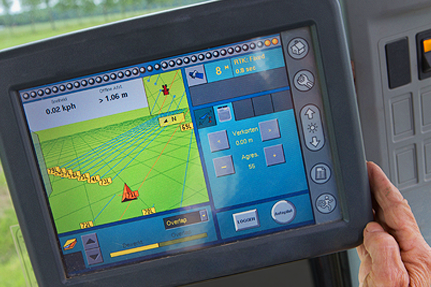A growing list of food companies and agribusinesses are offering payments to farmers for climate-smart farming practices if these practices can be adequately documented. Providing the right data to those companies is fundamental to opening and maintaining this new carbon-farming revenue stream for farmers.
What is carbon farming?
Carbon farming involves implementing practices that are known to improve the rate at which CO2 is removed from the atmosphere and converted to plant material and/or soil organic matter.
“Carbon farming can potentially benefit farmers in a couple of ways. First, it can provide an additional revenue stream for your farm,” said Nationwide Risk Management Consultant Derek Hommer. “Second, it can improve crop production in the long run. Today’s conservation-driven farming practices, including no-till, living cover crops and perennial crop rotations, can help build more resilient, healthy soils.”
Collecting climate-smart farming data
Data collection is nothing new for many progressive crop farmers. Today’s precision ag technology enables farmers to collect and leverage data to make informed crop input and management decisions. Now, the “ag carbon economy” is calling on farmers to collect additional data to help document their farming practices are contributing to the overall effort to lower agriculture’s carbon footprint.
“The more data you have, the better you can tell your story,” Hommer said. “A lot of farmers have already implemented the practices being requested — like no-till and cover crops — in some cases for decades. They just aren’t keeping records. As you begin taking steps to become part of the ag carbon economy, it’s crucial to figure out what data you need to collect and how you’re going to collect it.”
Common data collection tools available to farmers
- Yield monitors and mapping. The amount of carbon you can sequester in your fields is often determined by crop yield, making a yield monitor a valuable tool. Yield maps also help you make informed decisions on crop mixes to maximize crop revenue in systems including cash crops, cover crops and perennials.
- Planting maps. Also common for cash crops, planting maps can be used to show precisely when cover crops were planted and terminated, creating a baseline for the data necessary to show how much carbon those crops have sequestered.
- Tillage maps. Though many farmers are exclusively no-till, most production systems use a combination of no-till and other conservation tillage practices depending on field conditions. Having these practices precisely mapped will enable you to show how much carbon you’ve sequestered in each field.
Keep your farm data safe
The data required to verify your carbon-smart farming practices is a valuable commodity and represents your path to a totally new revenue stream on your farm. As such, Hommer recommends working with platforms and software that can verify the security of your data.
“The ultimate goal is to collect everything, analyze your data and put it to work for the betterment of your farm,” he said. “Be cautious with who you share your data with and how much you share. Make sure you’re working with the right partners to ensure you’re doing what you need to do to create new revenue for your farm.”
